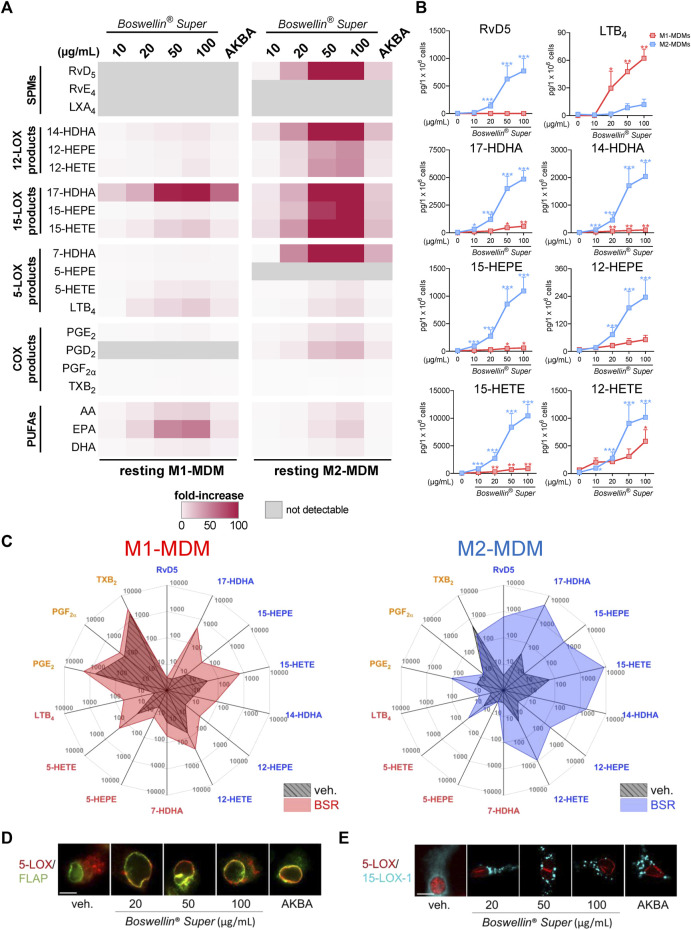FIGURE 2.
Boswellin® Super (BSR) potently induces formation of 12/15-LOX products in human MDM. (A,B) Human M1-or M2-MDMs (106/mL) were incubated with the indicated concentrations of BSR, AKBA (10 µM), or vehicle (0.2% ethanol) for 180 min at 37°C. Formed LM were isolated from the supernatants and analyzed by UPLC-MS/MS. (A) Heatmap showing the fold increase in LM formation for BSR- or AKBA- versus vehicle-treated cells, n = 3, separate donors. (B) Data for M1- and M2-MDMs treated with indicated concentrations of BSR are given as pg/106 cells for M1- (red) and M2-MDM (blue), means ± S.E.M., n = 3, separate donors. For statistical analysis, data were log-transformed, one-way analysis of variance (ANOVA) with Dunnett’s multiple comparison test, *p < 0.05, **p < 0.01, and ***p < 0.001 against the vehicle. (C) Radar plot showing selected LM (pg per 106 M1- and M2-MDMs) formed by cells after BSR (50 μg/mL) treatment compared to vehicle controls. (D,E) Subcellular redistribution of 5-LOX and FLAP in M1-MDMs (D) and of 5-LOX and 15-LOX-1 in M2-MDMs (E) after treatment with the indicated concentrations of BSR or AKBA (10 µM) for 180 min at 37°C. The cells were fixed, permeabilized, and incubated with antibodies against 5-LOX (red), FLAP (green), and 15-LOX-1 (cyan blue); scale bars, 10 mm. Results shown for a single cell are representative for approximately 100 individual cells analyzed in n = 3 independent experiments with separate donors, each.

